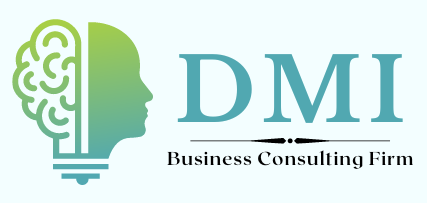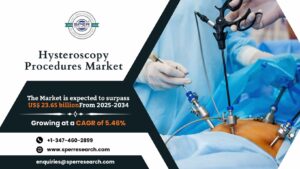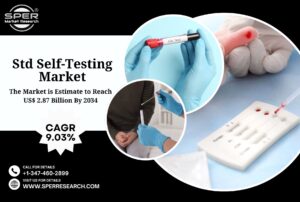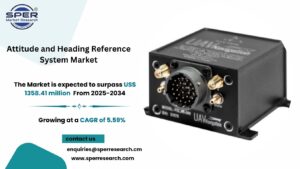Celiac Disease Treatment Market Share, Revenue and Future Opportunities 2034
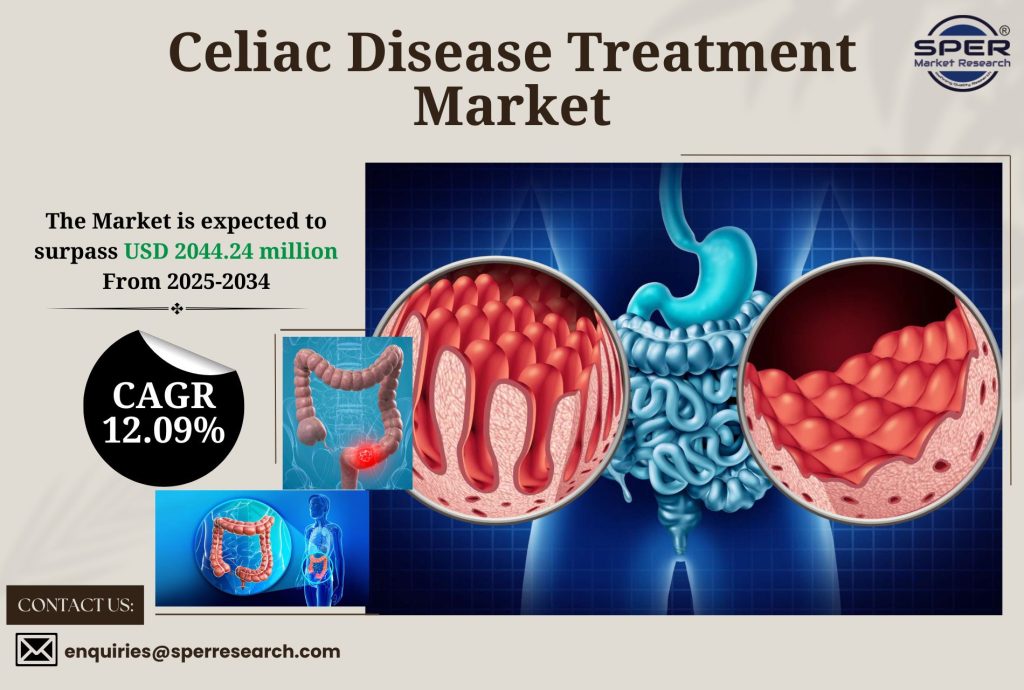
Celiac disease treatment is the medical and dietary management of an autoimmune illness in which gluten consumption causes damage to the small intestine. The primary and most effective treatment is a rigorous, lifelong gluten-free diet that excludes any meals and products containing wheat, barley, or rye. This helps to prevent symptoms like abdominal pain, diarrhoea, and malnutrition by enabling the intestinal lining to repair. In rare circumstances, additional therapies may include dietary supplements to correct deficiencies and drugs to treat inflammation or related disorders. Early detection and adherence to therapy are critical for long-term health.
According to SPER market research, ‘Global Celiac Disease Treatment Market Size- By Treatment, By Route of Administration, By Distribution Channel – Regional Outlook, Competitive Strategies and Segment Forecast to 2034’ state that the Global Celiac Disease Treatment Market is predicted to reach 2044.24 million by 2034 with a CAGR of 12.09%.
Drivers:
The Celiac disease treatment market is expanding rapidly, owing to a variety of causes. The rising incidence of coeliac disease, which is connected to rising diabetes rates, has increased the number of patients requiring effective therapies. Increased public awareness and improved diagnostic methods have resulted in earlier and more accurate diagnoses, driving up demand for treatment choices. Advances in therapeutic techniques, such as anti-inflammatory medications and therapeutic vaccinations, are providing alternatives to the typical gluten-free diet. Furthermore, the growth of the gluten-free food business and greater healthcare spending are promoting the development and availability of new treatment options.
Request a Free Sample Report: https://www.sperresearch.com/report-store/celiac-disease-treatment-market.aspx?sample=1
Restraints:
The Celiac disease therapy industry confronts numerous key hurdles that may limit its growth and accessibility. A major problem is the high expense of gluten-free items, which are necessary for controlling the condition. These items are frequently more expensive than gluten-containing alternatives, putting a financial strain on patients, particularly those with little income or insufficient insurance coverage. Furthermore, the development of pharmacological treatments has significant challenges, such as the lack of FDA-approved medications for coeliac disease, expensive R&D expenses, and severe regulatory criteria. These factors contribute to poor investment and sluggish progress in bringing innovative medicines to market.
North America dominates the coeliac disease treatment market due to a variety of variables. For starters, the region has a greater rate of diagnosed cases than others, which can be attributed to
increased awareness and screening measures. Second, sophisticated healthcare infrastructure and availability to specialised diagnostic technologies enable early and accurate detection. Third, there is a large number of pharmaceutical and food companies manufacturing gluten-free products and exploring alternative remedies. Some of the key market players are Amgen Inc., Amneal Pharmaceuticals LLC, BioLineRx Ltd., Glenmark Life Sciences Limited, Hikma Pharmaceuticals PLC, and others, and others.
For More Information, refer to below link: –
Celiac Disease Treatment Market Growth
Related Reports:
Global Astaxanthin Market Size
Global Veterinary Renal Disease Market Growth
Follow Us –
LinkedIn | Instagram | Facebook | Twitter
Contact Us:
Sara Lopes, Business Consultant — USA
SPER Market Research
enquiries@sperresearch.com
+1–347–460–2899
